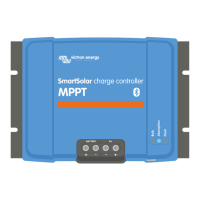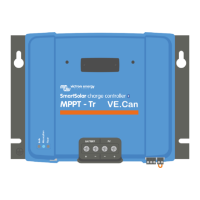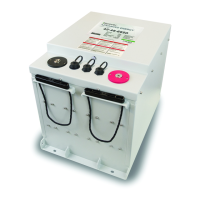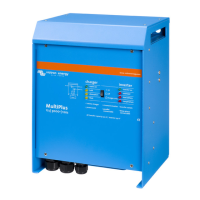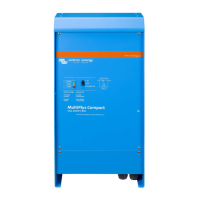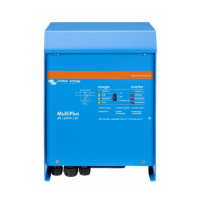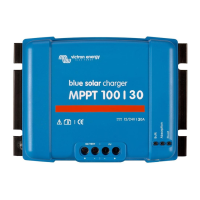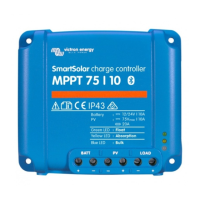Be aware that a red cable or positive labelled cable might not necessarily mean that the cable is indeed a
positive cable. A wiring or labelling mistake could have been made during installation of the solar charger.
The solar charger is not protected against reverse battery polarity and any damage caused by this is not covered under warranty.
Reverse battery polarity can in rare occasions be accompanied with a blown battery fuse (one that is located in the battery cable).
But in most cases the ultra-fast internal fuse inside the solar charger will blow to ensure a proper fail-safe situation. This internal
fuse will usually blow before the external fuse blows. The internal fuse is located in a non-serviceable area of the solar charger. It
is not possible to replace or repair this fuse. This fuse will only blow in case of an internal fault, and replacing the fuse will not fix
the internal fault.
Always verify the battery polarity before reconnecting the battery wires to the solar charger.
9.2.2. Reverse PV polarity
As long as the unit is installed within the published specifications, the PV input is protected internally against PV reverse polarity.
In case of reverse PV voltage, the solar charger will not indicate an error. The only way to tell is by the following signs:
• The controller is not charging the batteries.
• The controller is getting hot.
• The PV voltage is very low or zero Volt.
If this is the case check for reverse polarity using a multimeter by ensuring that the positive PV cable is connected to the positive
PV terminal, and the negative cable is connected to the negative terminal.
9.2.3. Battery full
Once the battery is full the solar charger will stop charging or will greatly reduce the charge current.
This is especially the case when at the same time the DC loads in the system are not consuming any power from the battery.
To find out what the state of charge (SoC) of the battery is, check the battery monitor (if present), or alternatively check what
charge stage the controller is in. Also observe that the solar cycle is (briefly) progressing trough these charge stages at the
beginning of the daily charge cycle:
• Bulk stage: 0-80% SoC
• Absorption stage 80-100% SoC
• Float or storage stage: 100% SoC.
Be aware that it can also be possible that the solar charger thinks the battery is full, while in reality the battery is not full. This can
occur when the charge voltages have been set too low, causing the solar charger to prematurely switch to the absorption or float
stage.
9.2.4. Remote terminal is missing, is disconnected or external control is active
Generally speaking both the remote connector and the wire loop need to be present for the controller to be operational. In some
advanced systems it can be that the remote on/off connector is connected to an external device, a switch, a relay or another type
of external control, like a battery BMS system.
Remote connector with wire loop
There are several ways to activate via remote on/off: Use modes of the system on-off:
• ON when the L and H terminals are interconnected via a switch or a relay contact
• ON when the L terminal is pulled to battery minus (VL< 3.5V)
• ON when the H terminal is high (2.9V<VH<Vbat)
MPPT solar charger manual
Page 47 Troubleshooting and Support
